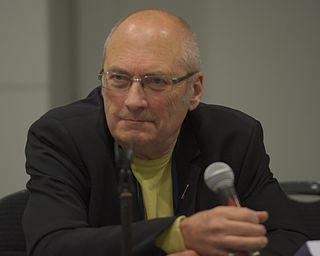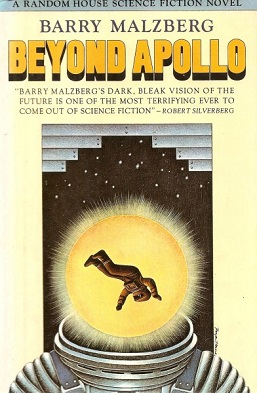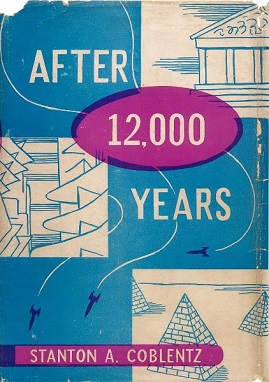Related Research Articles

Sword and sorcery (S&S) or heroic fantasy is a subgenre of fantasy characterized by sword-wielding heroes engaged in exciting and violent adventures. Elements of romance, magic, and the supernatural are also often present. Unlike works of high fantasy, the tales, though dramatic, focus on personal battles rather than world-endangering matters. Sword and sorcery commonly overlaps with heroic fantasy. The genre originated from the early-1930s works of Robert E. Howard. The term "sword and sorcery" was coined by Fritz Leiber In the May 1961 issue of the fantasy fanzine Amra, to describe Howard and the stories that were influenced by his works. In parallel with "sword and sorcery", the term "heroic fantasy" is used, although it is a more loosely defined genre.
Alexei Panshin was an American writer and science fiction critic. He wrote several critical works and several novels, including the 1968 Nebula Award–winning novel Rite of Passage and, with his wife Cory Panshin, the 1990 Hugo Award–winning study of science fiction The World Beyond the Hill.

John Frederick Clute is a Canadian-born author and critic specializing in science fiction and fantasy literature who has lived in both England and the United States since 1969. He has been described as "an integral part of science fiction's history" and "perhaps the foremost reader-critic of sf in our time, and one of the best the genre has ever known." He was one of eight people who founded the English magazine Interzone in 1982.

Unknown was an American pulp fantasy fiction magazine, published from 1939 to 1943 by Street & Smith, and edited by John W. Campbell. Unknown was a companion to Street & Smith's science fiction pulp, Astounding Science Fiction, which was also edited by Campbell at the time; many authors and illustrators contributed to both magazines. The leading fantasy magazine in the 1930s was Weird Tales, which focused on shock and horror. Campbell wanted to publish a fantasy magazine with more finesse and humor than Weird Tales, and put his plans into action when Eric Frank Russell sent him the manuscript of his novel Sinister Barrier, about aliens who own the human race. Unknown's first issue appeared in March 1939; in addition to Sinister Barrier, it included H. L. Gold's "Trouble With Water", a humorous fantasy about a New Yorker who meets a water gnome. Gold's story was the first of many in Unknown to combine commonplace reality with the fantastic.

Fantasy literature is literature set in an imaginary universe, often but not always without any locations, events, or people from the real world. Magic, the supernatural and magical creatures are common in many of these imaginary worlds. Fantasy literature may be directed at both children and adults.

Tanith Lee was a British science fiction and fantasy writer. She wrote more than 90 novels and 300 short stories, and was the winner of multiple World Fantasy Society Derleth Awards, the World Fantasy Lifetime Achievement Award and the Bram Stoker Award for Lifetime Achievement in Horror. She also wrote a children's picture book, and many poems. She wrote two episodes of the BBC science fiction series Blake's 7. She was the first woman to win the British Fantasy Award best novel award, for her book Death's Master (1980).

Colin Greenland is a British science fiction writer, whose first story won the second prize in a 1982 Faber & Faber competition. His best-known novel is Take Back Plenty (1990), winner of both major British science fiction awards, the 1990 British SF Association award and the 1991 Arthur C. Clarke Award, as well as being a nominee for the 1992 Philip K. Dick Award for the best original paperback published that year in the United States.

Beyond Apollo is a science fiction novel by American writer Barry N. Malzberg, first published in 1972 in a hardcover edition by Random House. Malzberg credits the inspiration for the novel to "I Have My Vigil", a 1969 short story by fellow science fiction writer Harry Harrison.

Infinity Science Fiction was an American science fiction magazine, edited by Larry T. Shaw, and published by Royal Publications. The first issue, which appeared in November 1955, included Arthur C. Clarke's "The Star", a story about a planet destroyed by a nova that turns out to have been the Star of Bethlehem; it won the Hugo Award for that year. Shaw obtained stories from some of the leading writers of the day, including Brian Aldiss, Isaac Asimov, and Robert Sheckley, but the material was of variable quality. In 1958 Irwin Stein, the owner of Royal Publications, decided to shut down Infinity; the last issue was dated November 1958.

The Dragon and the George is a 1976 fantasy novel by American writer Gordon R. Dickson, the first in his "Dragon Knight" series. A shorter form of the story was previously published as the short story, "St. Dragon and the George" in the September 1957 issue of The Magazine of Fantasy and Science Fiction.
Science fiction studies is the common name for the academic discipline that studies and researches the history, culture, and works of science fiction and, more broadly, speculative fiction.

After 12,000 Years is a science fiction novel by American writer Stanton A. Coblentz. It was first published in book form in 1950 by Fantasy Publishing Company, Inc. (FPCI) in an edition of 1,000 copies, of which 750 were hardback. Lloyd Arthur Eshbach regarded this as one of the stronger titles published by FPCI. Considered one of the author's most bizarre and most interesting futuristic fantasies, the novel originally appeared in the Spring 1929 issue of the magazine Amazing Stories Quarterly. The novel was abridged for the FPCI publication. E. F. Bleiler considered the unabridged version to be superior.

The Moon Maiden is a science fiction novel by Garrett P. Serviss. It was first published in book form in 1978 by William L. Crawford, without imprint, in an edition of 500 copies. The novel originally appeared in the magazine Argosy in 1915.

The Revenge of Dracula is a horror novel by British writer Peter Tremayne. It was first published in the United Kingdom in 1978 by Bailey Brothers & Swinfen. The first United States edition was published by Donald M. Grant, Publisher, Inc. in 1978 in an edition of 1,250 copies which were signed by the author and the illustrator, Dan Green. It is the second book in Tremayne's Dracula Lives trilogy.

Science Fiction in Old San Francisco: Volume One, History of the Movement From 1854 to 1890 is a history of science fiction writers in San Francisco in the period following the American Civil War by Sam Moskowitz. It was first published by Donald M. Grant, Publisher, Inc. in 1980 in an edition of 1,500 copies. This book with its companion volume Into the Sun & Other Stories won a Pilgrim Award for the author in 1981.
Marshall Benton Tymn was an editor, academic and bibliographer of science fiction and fantasy. He received the Pilgrim Award in 1990. He was a founder of the Instructors of Science Fiction in Higher Education.

Two Complete Science-Adventure Books was an American pulp science fiction magazine, published by Fiction House, which lasted for eleven issues between 1950 and 1954 as a companion to Planet Stories. Each issue carried two novels or long novellas. It was initially intended to carry only reprints, but soon began to publish original stories. Contributors included Isaac Asimov, Robert A. Heinlein, Arthur C. Clarke, Poul Anderson, John Brunner, and James Blish. The magazine folded in 1954, almost at the end of the pulp era.
Ben Harrison Orkow (1896-1988) was an American screenplay, theatre, and science fiction writer of Russian descent. He was professionally known as either B. Harrison Orkow or Ben Orkow.

A Honeymoon in Space is a 1901 novel by George Griffith. It was originally serialized in abridged form in Pearson's Magazine in 1900 under the title Stories of Other Worlds. The scientific romance story depicts a tour of the Solar System, a type of story that was in vogue at the time.
Science-Fiction: The Gernsback Years is a 1998 reference work covering the history of English-language science fiction magazines from 1926 to 1936, comprising 1,835 individual stories by more than 500 different authors across a total of 345 issues from 14 magazines. It was written by E. F. Bleiler with the assistance of his son Richard Bleiler, a follow-up to their previous Science-Fiction: The Early Years (1990).
References
- Clute, John and Grant, John. The Encyclopedia of Fantasy (2nd US edition). New York: St Martin's Griffin, 1999. ISBN 0-312-19869-8. (Paperback)
- Clute, John Science Fiction: The Illustrated Encyclopedia. London: Dorling Kindersley, 1995. ISBN 0-7513-0202-3.
- Clute, John and Peter Nicholls, eds. The Encyclopedia of Science Fiction . New York: St Martin's Press, 1995. ISBN 0-312-13486-X.
- Disch, Thomas M. The Dreams Our Stuff Is Made Of. Touchstone, 1998.
- Peter Nicholls, ed., The Encyclopedia of Science Fiction . St Albans, Herts, UK: Granada Publishing, 1979. ISBN 0-586-05380-8.
- Reginald, Robert. Science Fiction and Fantasy Literature, 1975-1991. Detroit, MI/Washington, DC/London: Gale Research, 1992. ISBN 0-8103-1825-3.
- Westfahl, Gary, ed. The Greenwood Encyclopedia of Science Fiction and Fantasy: Themes, Works, and Wonders (three volumes). Greenwood Press, 2005.
- Wolfe, Gary K. Critical Terms for Science Fiction and Fantasy: A Glossary and Guide to Scholarship. Greenwood Press, 1986. ISBN 0-313-22981-3.